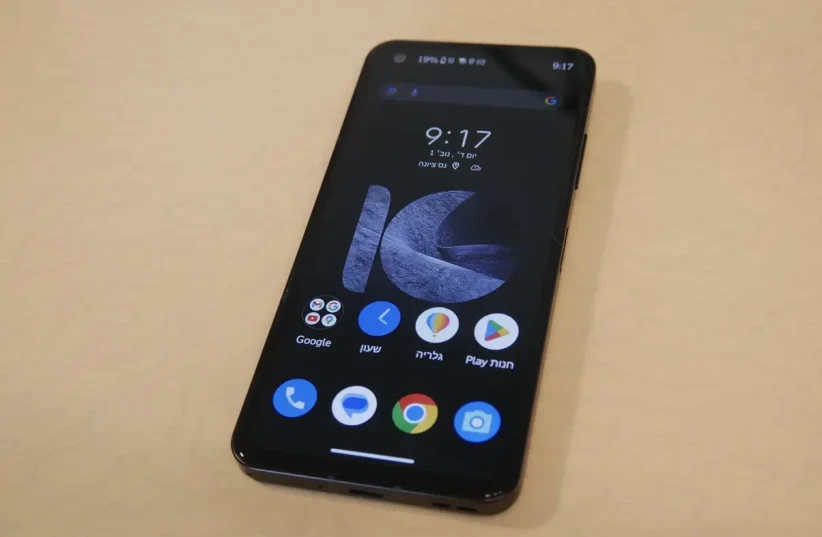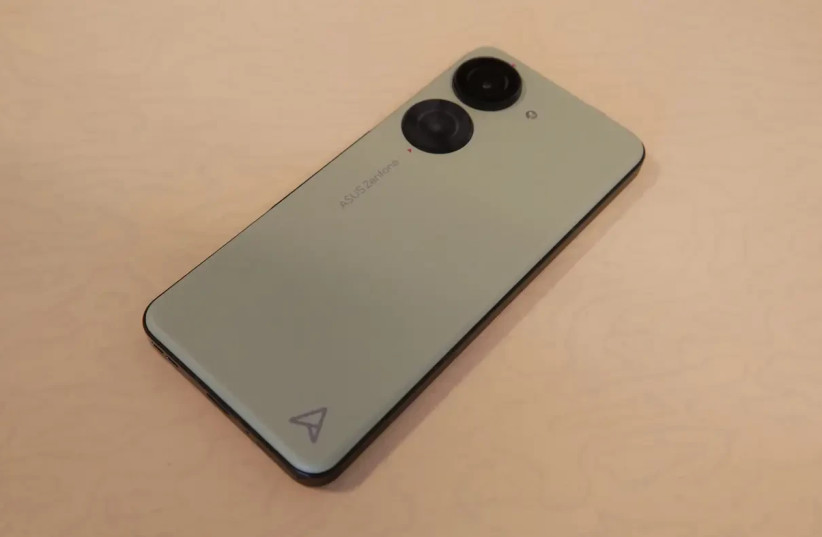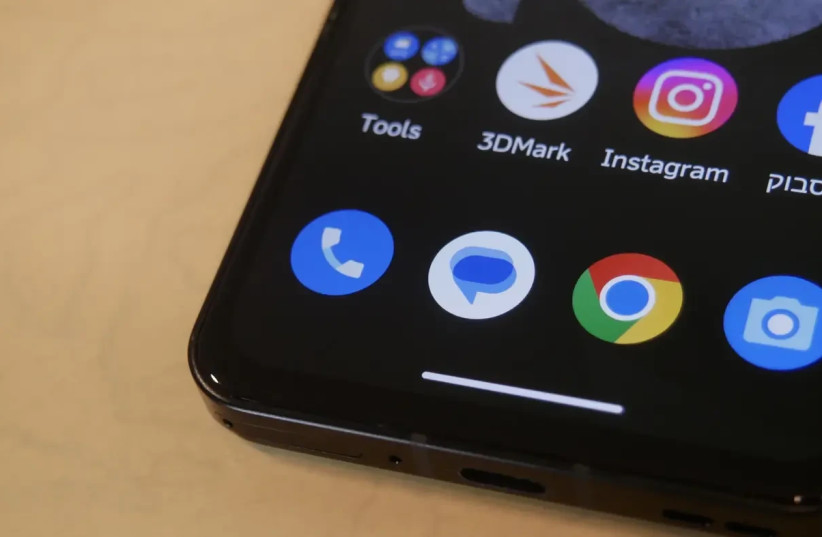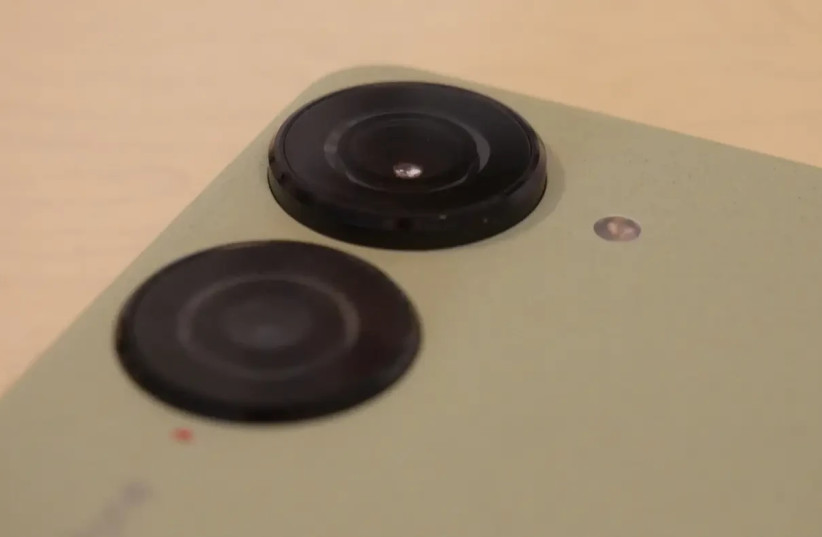The Asus Zenfone 10 may have arrived a bit late for review, but it's a smartphone that cannot be overlooked. It's a compact Android device, one of the smaller ones regularly imported to Israel, offering an intriguing and distinct experience, not just due to its size. Let's dive in, shall we?
Design and Structure
First and foremost, the Zenfone 10 is indeed a small smartphone. With a 6-inch screen, it's compact and comfortable to hold, but its appeal goes beyond size. Its back is made of slightly textured, pleasantly grippy rubber in bright green, boasting additional unconventional colors like red and blue. Quite cool.
Asus brings its meticulous design touches from their laptop lineup here, with a few small details on the back that make it stand out. Besides the brand name, small red arrows point to the large camera lenses, which, by the way, are directly embedded into the back without any protrusions like in other smartphones. There's also Asus's small logo in the opposite corner, and that's it. Inside the package, we found a high-quality black plastic case that offers excellent protection but hides the beautiful colorful back.
On the right side, there's the recessed power button, which also doubles as a fingerprint reader, and above it, the volume rocker, slightly too high for my liking. There are also some small embellishments here for the keen-eyed. At the top of the device, a pleasant surprise awaits: a headphone jack! At the bottom, you'll find the speaker grille, USB-C port, and the SIM tray, which accommodates two SIM cards but lacks space for a memory card.
The front of the Zenfone 10 is dominated by a screen with relatively thin bezels and a small teardrop notch housing the front camera in the upper left corner. The overall feel of the device is good, comfortable, and pleasant to hold, thanks to all the aforementioned features, even for those with small hands. One last word on the phone's interface: they've built here a relatively light Android skin that's not overloaded, blending its design language with the fonts and overall design of the device, which is charming and beautiful. Hats off to the Taiwanese.
Display and Sound
The Zenfone 10 boasts a small yet superb Super AMOLED display (with a practical viewing area of 5.92 inches), featuring a resolution of 1080 by 2400 pixels and a refresh rate of up to 120Hz. With high brightness, accurate and customizable colors, and deep blacks, this screen, although not large or high-end, provides an excellent viewing experience within its small footprint.
The sound department also doesn't lag behind. The two speakers—one at the bottom and one in the earpiece—deliver clean and surprisingly powerful sound considering the phone's size. Asus has also added an equalizer that enhances the audio experience, with presets tailored for different scenarios (music, gaming, etc.), further elevating the device's multimedia experience, especially if you include the headphone jack. However, we didn't find Dolby Atmos support here, as seen in many modern phones today.
Camera
Given the success in other departments, I had high expectations for the Zenfone 10's camera, but they were slightly dashed. On paper, Asus's camera setup is more than reasonable: a primary 50-megapixel camera with an f/1.9 aperture and a 1/1.56-inch sensor size, along with a unique "Gimbal" stabilization system, alongside a 13-megapixel ultrawide lens and 8K video recording capability. By the way, the front camera is a wide and quality 32-megapixel one. The unique stabilization system was supposed to provide exceptional results in night photography. However, the issue with the Zenfone 10 lies in image processing.
Asus has employed heavy artificial intelligence processing here, even in low-light photos, resulting in an artificial look. The photos appear bright and seemingly well-balanced, but there's something unnatural about them. For instance, bright signage looks distorted. Other details in the photos also don't look natural.
Even in daylight photos, the processing is exaggerated—look at the flowers, where the colors are amplified and overly saturated, losing detail. Nevertheless, the detail in zoomed mode impressed me. On the contrary, the video recording of the camera is actually quite good, with excellent stabilization. Particularly for random video shots, the Zenfone 10's camera is a good choice, but not for still photographers seeking a natural look.
Performance
In terms of performance, the Zenfone 10 punches above its weight: Asus has tucked underneath this spicy little smartphone an impressive Snapdragon 8 Gen 2 processor, with a performance core clocked up to 3.2 GHz, along with four power-efficient Cortex Gold cores clocked at 2.8 GHz, and three additional cores for less demanding tasks, alongside either 8 or 16 (!) gigabytes of RAM, and it shows:
In the Wild Life Extreme test by 3Dmark, my consistent performance test yielded 3279 points, putting it in a better place in the results than 79% of the other devices tested. In the more complex Solar Bay test, it scored an impressive 5,421 points, among the best scores for this device overall (better than 96% of other Zenfone 10 devices), and better than 64% of all devices tested in this benchmark, with smooth frame rates.
The implication of all the numbers in the previous paragraph for those who don't want to get bogged down is that the Zenfone 10 is a small performance beast, capable of handling complex tasks like gaming and video editing without a hitch. By the way, it has several operation modes, and of course, we tested the high-performance mode, and it activates automatically if it detects a demanding application, or can be activated on demand.
Asus has also added support for dual-band Wi-Fi 6e and some cute tweaks taken from their gaming experience, which further enhances the already smooth user experience, and that's great.
Battery Life
The ability to choose between different modes of operation also ensures long battery life despite the relatively modest battery size of 4300 mAh. The Zenfone 10 will easily last you a few days in standby or sleep mode and over a day in more intensive use, which is impressive. So, we don't really have complaints in the battery life department, despite the relatively small physical battery size. Asus squeezes it to the last drop and manages it well in terms of maintaining longevity over time with advanced management capabilities and settings.
Bottom Line
The Zenfone 10 is a wonderful Android smartphone in almost every possible aspect. The fact that it is small allows for comfortable grip, it has a unique design and presence due to its distinctive colors and materials, its battery life is good, the performance is excellent, and the screen - superb. It could have been the perfect small Android smartphone, if not for the disappointing setback with the camera. Honestly, the excessive processing and exaggerated saturation in almost all lighting conditions disappointed me. However, the video recording is actually very good, and it even records in 8K. If Asus fixes this flaw with a redesign of the built-in camera app, it could be the perfect phone for every possible need.
The only additional drawback is its price, which is somewhat high in Israel: around NIS 3,500, a price competing with the Galaxy S or iPhone. With all due respect, Asus is a less familiar brand in the field, and perhaps it would have been wise to adjust the pricing to be a bit more friendly. But if you decide to invest, with the slight camera setback, the Zenfone 10 will be a good investment with a wonderful daily usage experience.



